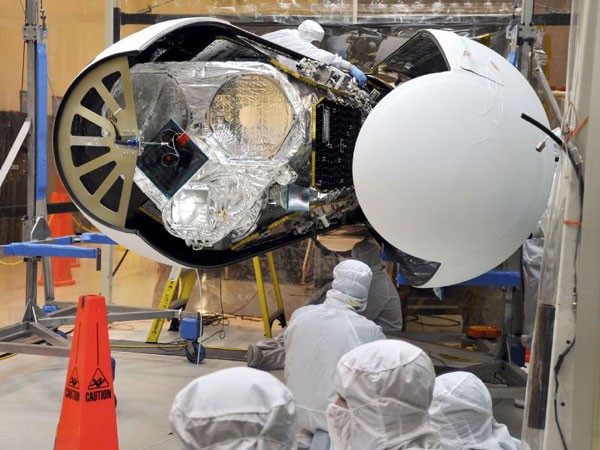NASA's NuSTAR Spacecraft Set To Begin Black Hole Hunting (PHOTOS)
NuSTAR, a black hole hunter with sharp X-ray eyes, will be launched on 14 June from Kwajalein Atoll in the central Pacific Ocean.
The observatory, which will hunt for black holes and other exotic objects using the specialised X-ray eyes, will be launched from a Pegasus XL rocket carried by an Orbital Science Corporation L-1011 "Stargazer" plane. The plane will take off from Kwajalein Atoll an hour before launch, flying out over the Pacific Ocean.
Around five seconds before launch, the Pegasus XL rocket, also known as Orbital, will drop from the plane, ignite and propel NuSTAR to space.
Nasa mentions that when NuSTAR separates from the Pegasus, the satellite's system that controls its orientation in space, or "attitude," will begin to stabilise it, and the spacecraft solar arrays will be deployed. Around this time, its first signal will be received on the ground via Nasa's Tracking and Data Relay Satellite System. Over the following week, NuSTAR personnel will perform a series of checkouts to ensure that all spacecraft subsystems are operating nominally.
During a two-year primary mission phase, NuSTAR will map selected regions of the sky in order to take a census of collapsed stars and black holes of different sizes by surveying regions surrounding the center of own Milky Way Galaxy and performing deep observations of the extragalactic sky.
It will also map recently-synthesised material in young supernova remnants to understand how stars explode and how elements are created and understand what powers relativistic jets of particles from the most extreme active galaxies hosting supermassive black holes.
"We're going to look at the remnants of stars that exploded long ago and also be poised to respond quickly-within a day-to any new explosions like supernovae or gamma-ray bursts," the National Geographic quoted NuStar's principal investigator Fiona Harrison, an astrophysicist at the California Institute of Technology (Caltech).
Apart from its basic programme, the spacecraft will provide scope for different investigations including mapping microflares on Sun's surface and probing cosmic ray origins to studying the extreme physics around collapsed stars. Additionally, it will also respond to targets of opportunity including supernovae and gamma-ray bursts.





© Copyright IBTimes 2024. All rights reserved.






















